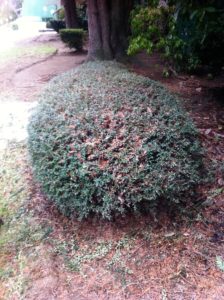Sometimes I can’t believe how fast the landscape seasons piled up on me. Becoming a landscape professional is a wild ride. For years I’ve been so focused on getting better (and feeding two kids) and now, I’m sending the elevator back down. All of a sudden. Vas, the proud Red Seal Journeyman Horticulturist, is training young workers.
Teaching new landscape horticulture apprentices requires a lot of patience. I did one session today and it went well. Training is critical to the success of our company. Winter is a great season for training.
Step 1, raking and picking up piles. This is a perfect job for newer workers. I was nearby pruning cedar hedges. This allowed me to think of feedback for later. It’s also a certified way to get more accomplished in a day. Stay together in a team as much as possible.
Feedback: slow completion time. What would take me maximum 1.5 hours took the apprentice almost the entire morning. Best pile pick up involves spreading your legs apart and stepping on the corners of your tarp so the debris can be raked between your legs and onto your tarp. Good raking should increase your heart rate and lead to perspiration.
Step 2, cotoneaster shearing. Another easy job, once you cover safety issues. The main issue with power shears is keeping your flesh away from the moving blades. This is accomplished by keeping the machine nicely in front of you at all times. No funny movements near your legs; no warming up cold hands on the gear case.
Feedback: the cotoneaster lost its spikiness but the pruning could have been a bit harder. Nailed it on safety.


Step 3, logistics.
Machines are gassed up on tarps, not on sidewalks where, inevitably, ugly spills happen.
Stihl gas caps can be a challenge. So we practiced. They either fit tightly or they don’t fit at all. Easy!
Our Shindaiwa blower required priming and that required locating the primer. As I said before, training requires patience.
I am curious to see what happens to my trainees in the future. Perhaps, one day they will appreciate the days we spent together. Then, later, it will be their turn to send the elevator back down.

